Romans pursued various forms of entertainment because of their love for spectacle, drama, and competition. Roman entertainment was not a mere pastime; it was a key component of social and political life, embedded into the very fabric of Roman culture. As they said, “Give them bread and circuses”. Citizens of Rome and its expansive territories enjoyed a wide array of activities, ranging from theatrical performances to blood-soaked gladiatorial contests. The coliseums, circuses, and theaters were more than architectural marvels; they were stages upon which the Roman identity was performed and expressed through shows of leisure, power, and religious ritual.
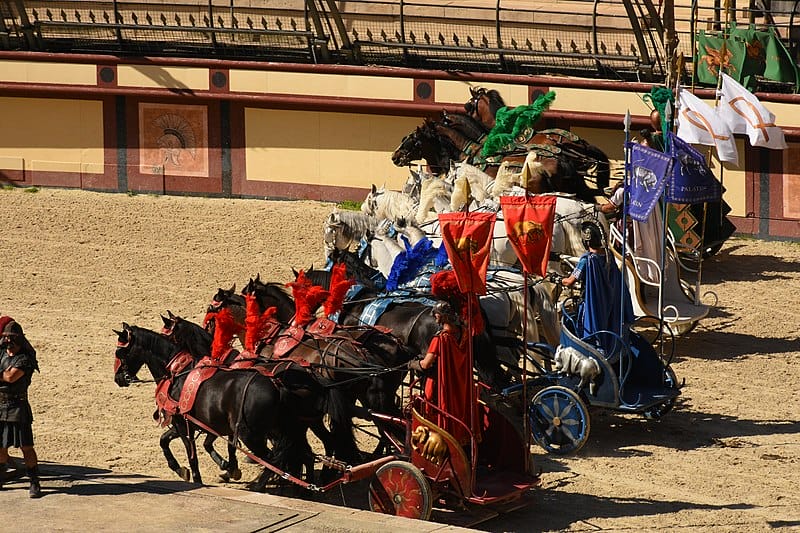
Source: Amaury Laporte, CC BY 2.0 https://creativecommons.org/licenses/by/2.0, via Wikimedia Commons
These entertainment venues were multifunctional, catering to the public’s demand for diverse amusements. Entertainment in ancient Rome evolved from rustic and simplistic origins to become highly sophisticated displays that could captivate audiences of tens of thousands. Whether it was chariot racing in the Circus Maximus or plays inspired by Roman or Greek mythology, the spectrum of Roman entertainment was wide and varied.
While some forms celebrated Roman martial excellence and the gods’ reverence, others provided pure humor. Understanding Roman entertainment forms gives us not just better insight into their taste for amusement but also reveals the societal structures, religious beliefs, and everyday lives of people from one of history’s greatest empires.
Key Takeaways
- Roman entertainment was central to cultural identity and societal norms.
- The multifunctionality of entertainment venues reflected the diverse range of leisure activities.
- Understanding these entertainments provides insight into Roman societal structures and daily life.
Context of Entertainment in Ancient Rome
Entertainment in Ancient Rome served both as a reflection of social power structures and a tool for political agendas. Public spectacles were central to the communal experience, while emperors wielded entertainment as a demonstration of imperial benevolence and influence.
The Role of Public Spectacles
Public spectacles were a pervasive and essential aspect of Roman entertainment. Theaters, amphitheaters, and circuses were the main venues that facilitated a wide array of events, from theatrical performances to gladiator games. These spectacles were not merely forms of relaxation; they played a critical role in reinforcing the Roman community’s social hierarchy. Senators and elites would be seated close to the action while the general populace filled the higher, more distant seats. These spectacles functioned as a means to present the citizens with both awe-inspiring entertainment and subtle social instruction.
The Influence of Emperors on Entertainment
Emperors skillfully used entertainment to assert dominance and curry favor with the public. They often organized and funded extravagant games and festivals to gain or maintain popularity and to distract the populace from potential political unrest. An emperor’s ability to provide such diversions was viewed as indicative of both their power and their generosity.
The provision of games could promote an emperor’s image as a plebeian benefactor who understood the common person’s desire for relaxation and festivity. Such acts could strengthen an emperor’s political position by directly influencing the audience’s perception of them. Moreover, entertainment such as lavish public spectacles could serve as a demonstration of Rome’s wealth and power, further amplifying the emperor’s prestige both domestically and among foreign nations.
Top 10 Popular Roman Entertainment Forms
These Roman entertainment forms are counted among the top 10 on our lists. They are not ranked among them but as a group of most common entertainment forms.
1. Gladiatorial Combat: A Thrilling Spectacle
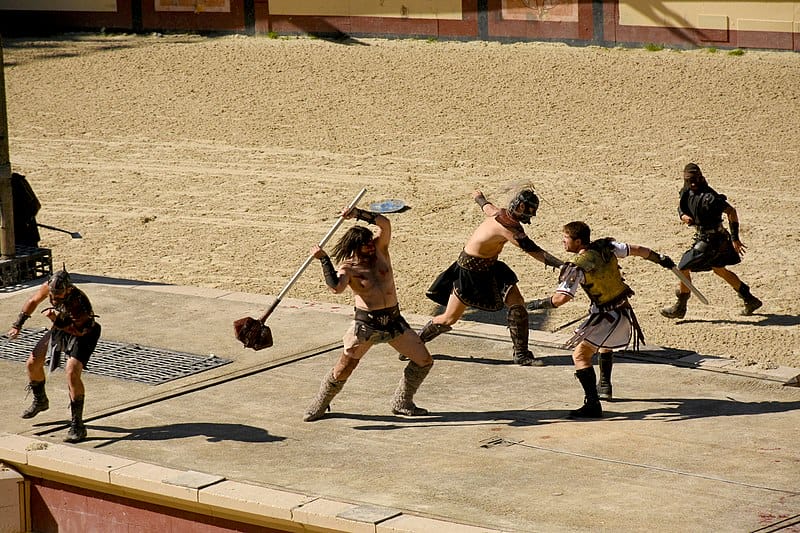
Source: Amaury Laporte, CC BY 2.0 https://creativecommons.org/licenses/by/2.0, via Wikimedia Commons
Gladiatorial combat was one of the most famous forms of entertainment in ancient Rome. These events were held in arenas, with gladiators – often slaves, prisoners of war, or condemned criminals—pitted against each other to fight to the death or until someone surrendered. Spectators were drawn to the combination of skill, strength, and the raw brutality of these battles. Owners and trainers of gladiators would prepare their warriors for a variety of fighting styles, often with distinctive weapons and armor.
2. Chariot Races: The Need for Speed
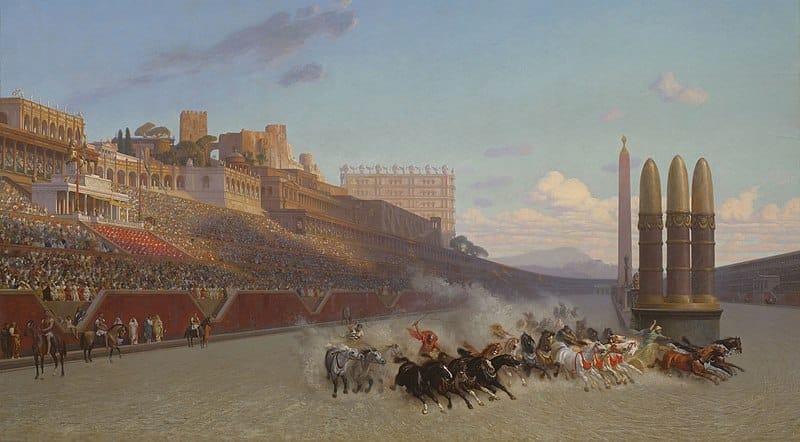
The thunder of hooves and the roar of the crowd were defining features of chariot races, a beloved Roman entertainment pastime. This sport saw teams of horses, usually four (quadrigas), pulling a chariot around an elongated circuit. The races were held in venues called circuses, with the Circus Maximus in Rome being the most prominent. Teams represented different factions, identifiable by their colors, and races frequently resulted in spectacular crashes and intense rivalries.
3. Theatrical Performances: Comedies and Tragedies
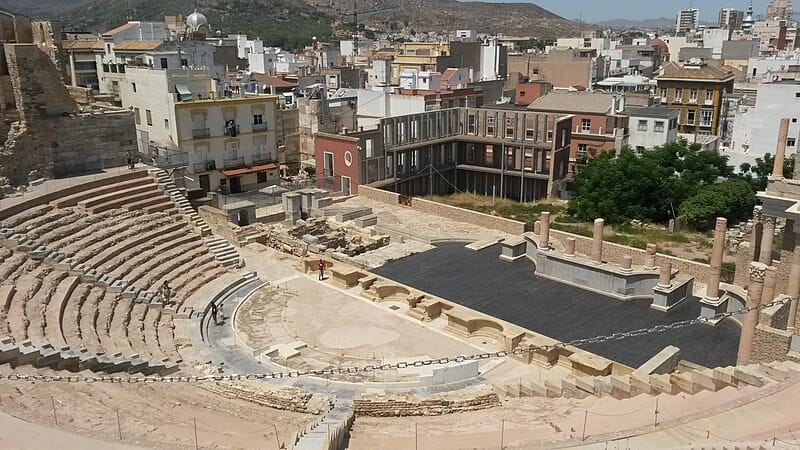
Theatre was another cornerstone of Roman entertainment, with performances of both comedies and tragedies. These cultural plays were often staged in open-air theatres and could feature intricate sets and costumes. Actors, skilled in the dramatic arts, would convey a wide range of emotions, captivating the audience with gripping storylines. The themes often explored in these plays were love, politics, and social satire, reflecting the complexity and richness of Roman culture.
4. Wild Animal Hunts: The Lure of the Wild
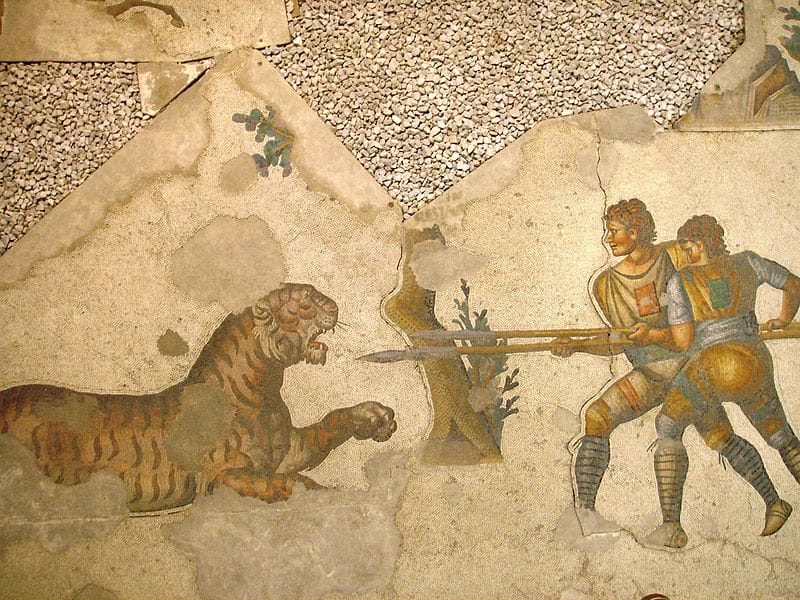
Hunts for wild animals – or venationes – were spectacles that combined the thrill of the hunt with a public display of Rome’s dominance over nature. Exotic animals, such as lions, bears, and even elephants, were captured from far-flung corners of the Empire and brought to the Colosseum and other arenas. Gladiators, referred to as venatores, displayed their skill and courage by confronting these creatures. These events were stark representations of life and death, often featuring fierce battles that ended in the slaughter of animals and occasionally the hunters themselves.
5. Games Honoring the Gods and Festivals
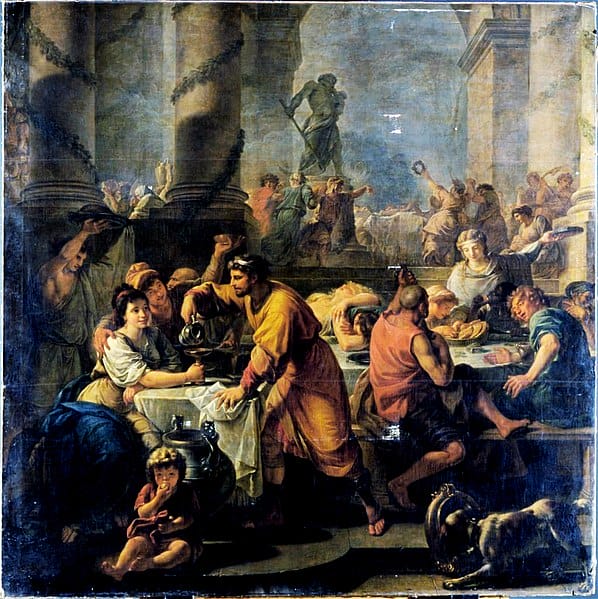
The ludi, or public games, were significant events in the Roman calendar, frequently dedicated to various gods and intended to secure divine favor. These games included chariot races, athletic competitions, and theatrical performances, all intending to honor the gods and strengthen communal bonds. Festivals like Saturnalia and the Feast of Lupercal were accompanied by processions and games that reflected the religious importance of such events. Although it contains some of the other Roman entertainment forms, the ludi represents a spectacle for itself.
6. Public Executions and Punishment as Entertainment
Public executions took on a dual role as sources of Roman entertainment and as brutal reminders of the consequences of defying Roman law. These events were often staged in amphitheaters, where a mixture of social classes gathered to witness a drama that underscored societal values regarding justice and order.
Execution Methods:
- Thrown to Beasts: Condemned prisoners fought dangerous animals or were executed.
- Duels: Those sentenced would fight among themselves to win a chance to survive.
Philosophers like Seneca criticized the bloodlust and the dangerous pleasure the public derived from these spectacles. The events were used to discourage crime and strengthen the social fabric through fear and morality tales enacted in real life. These spectacles served not only as punishments but also as messages to the populace regarding the might of Roman authority and the risk of crime.
Private Spectacles
7. The Love of Gaming: Board Games and Dice
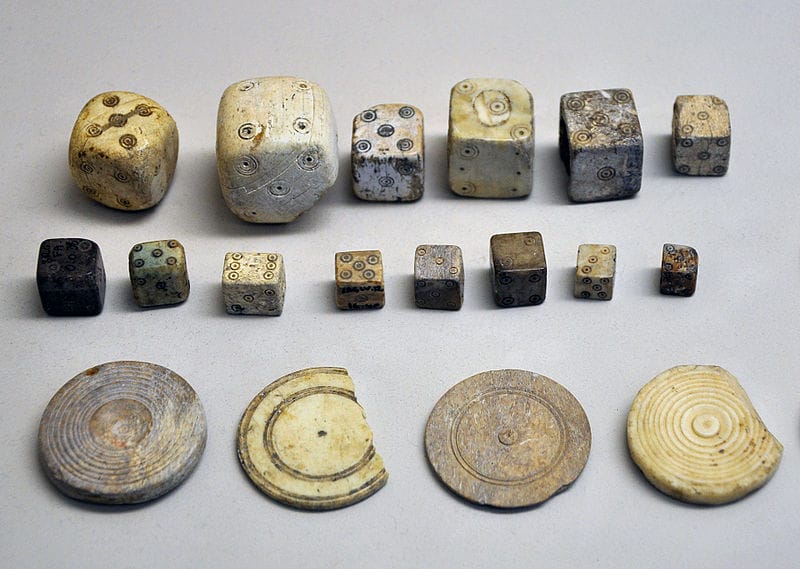
Board games and dice were an integral part of Roman entertainment. Ludus Latrunculorum, a strategy board game reminiscent of chess, was popular among the citizenry. They also had a strong inclination towards gambling with dice, a pastime that exceeded class barriers.
8. Physical Fitness and Sporting Events
The Romans placed a high value on physical fitness, which was reflected in their enthusiasm for athletic sports. They participated in running races, wrestling, and various ball games. Swimming was not only a recreational activity but also a skill taught for military purposes.
9. Artistic Pursuits: Music and Poetry Readings
Cultural events such as music performances and poetry readings illustrated the Romans’ artistic side. Music played a significant role in both private and public life. Poetry readings, often held in public forums, were a prestigious pastime, attracting prominent literary figures of the era.
10. Public Baths (Thermae)
Public baths, or thermae, served as a multipurpose facility for socialization, relaxation, and hygiene. These baths were essential to the Romans as centers of relaxation and community interaction, incorporating various activities like swimming and sports in certain spaces.
Conclusion:
Tell us in the comments if we missed something that you think should be included on this list.
People Also Ask:
What were the most crowd-pleasing entertainments in ancient Rome?
The spectacles that garnered the most enthusiasm were undoubtedly the gladiatorial games and chariot races. Amphitheaters across the empire, with the Colosseum being the most iconic, were filled with crowds eager to witness the fierce combat between gladiators. Chariot racing in the Circus Maximus was another public favorite, often causing excitement comparable to that seen in modern sports events.
How did gladiatorial events shape Roman entertainment culture?
Gladiatorial events had a significant influence on Roman culture, reinforcing social hierarchies and values such as bravery and martial skills. These events also served political purposes, as emperors and politicians would sponsor games to gain popularity and demonstrate their largesse. The gladiatorial games illustrated the Roman affinity for competition and spectacle, and they were moments of communal experience for the Roman populace.
Which sports were commonly practiced by the Romans?
Romans engaged in a variety of sports including wrestling, boxing, and footraces. Ball games, resembling volleyball or handball, were also quite popular. These athletic pursuits not only served as entertainment but also played a role in physical training for the military.
In what ways did Roman entertainment reflect societal values?
Roman entertainment, particularly public spectacles, mirrored the Empire’s values and ideologies. Civic architecture, like theaters and amphitheaters, encapsulated the Romans’ architectural prowess and their emphasis on community spaces. The grandiosity of the games exemplified a culture that celebrated power and conquest. Leisure activities also demonstrated the Romans’ appreciation for the arts, literature, and the pursuit of intellectual engagement.
Can you list some leisure activities enjoyed by Roman citizens?
Aside from spectacles, Roman citizens relished a range of leisure activities. These included attending the theater for plays and mime performances, relaxing in bathhouses, dining at banquets, and reading literature. Social gatherings were commonplace in the villas of the wealthy, where conversations and philosophical debates took place as a part of Roman entertainment.
How did Roman entertainment evolve during the Empire’s expansion?
As the Empire expanded, Roman entertainment absorbed influences from various conquered regions. The range of gladiatorial combatants began to display an international flavor, with fighters styled after non-Roman warriors. Animal hunts displayed exotic creatures from new provinces, and theatrical productions began to incorporate Greek and Eastern elements, showcasing their cultural assimilation and the diversity of the Empire.
Hello, my name is Vladimir, and I am a part of the Roman-empire writing team.
I am a historian, and history is an integral part of my life.
To be honest, while I was in school, I didn’t like history so how did I end up studying it? Well, for that, I have to thank history-based strategy PC games. Thank you so much, Europa Universalis IV, and thank you, Medieval Total War.
Since games made me fall in love with history, I completed bachelor studies at Filozofski Fakultet Niš, a part of the University of Niš. My bachelor’s thesis was about Julis Caesar. Soon, I completed my master’s studies at the same university.
For years now, I have been working as a teacher in a local elementary school, but my passion for writing isn’t fulfilled, so I decided to pursue that ambition online. There were a few gigs, but most of them were not history-related.
Then I stumbled upon roman-empire.com, and now I am a part of something bigger. No, I am not a part of the ancient Roman Empire but of a creative writing team where I have the freedom to write about whatever I want. Yes, even about Star Wars. Stay tuned for that.
Anyway, I am better at writing about Rome than writing about me. But if you would like to contact me for any reason, you can do it at contact@roman-empire.net. Except for negative reviews, of course. 😀
Kind regards,
Vladimir
